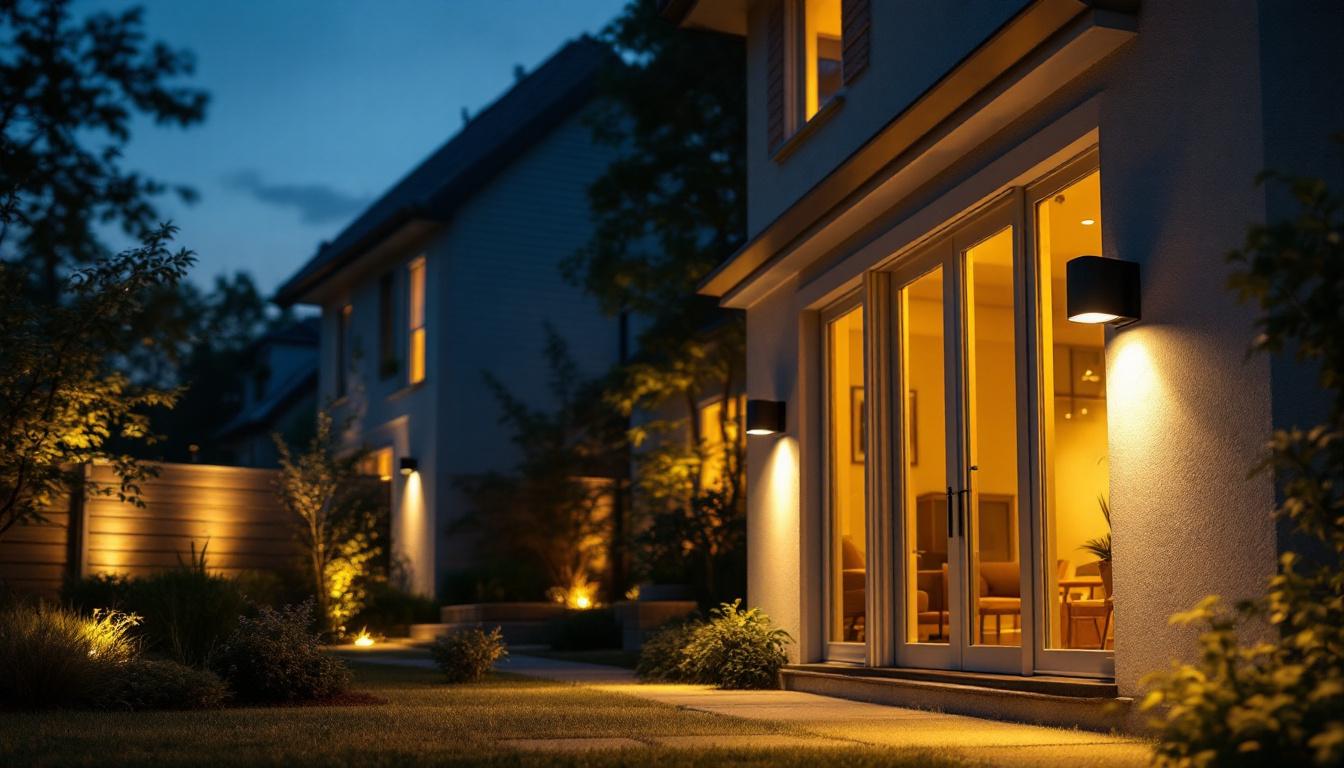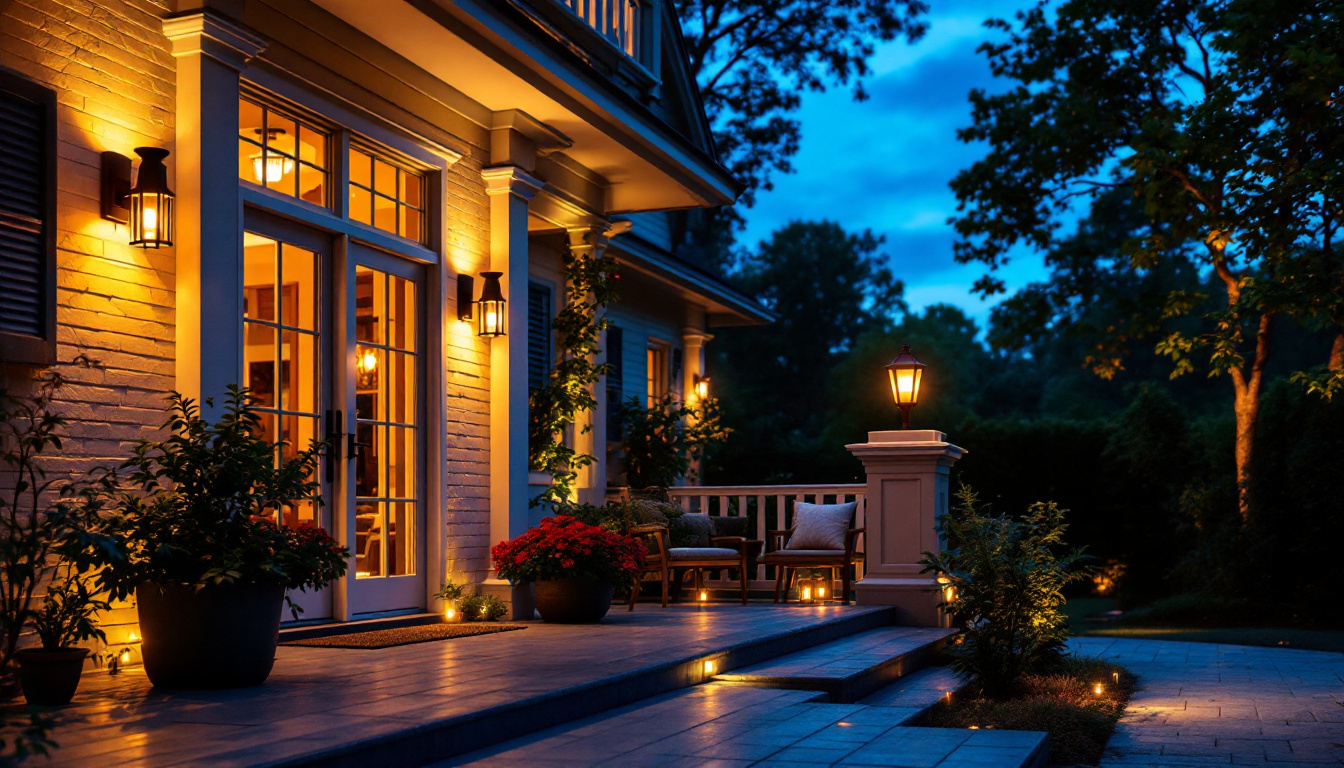
Lighting contractors play a crucial role in enhancing the safety and aesthetics of outdoor spaces. One of the most effective tools in their arsenal is motion sensor outdoor lights. These fixtures not only provide illumination but also enhance security and energy efficiency. This article delves into the best practices for selecting and installing motion sensor outdoor lights, ensuring that contractors can deliver optimal results for their clients.
Before selecting the best motion sensor outdoor lights, it’s essential to understand how motion sensor technology works. These lights are equipped with sensors that detect movement within a specified range. When motion is detected, the light activates, illuminating the area for a predetermined duration. This feature not only enhances security but also provides convenience, as the lights automatically turn on when needed, reducing the need for manual operation.
Most motion sensors use one of three technologies: passive infrared (PIR), microwave, or dual technology. PIR sensors detect heat emitted by objects, while microwave sensors emit microwave pulses to detect movement. Dual technology combines both methods to enhance reliability and reduce false triggers. Each type of sensor has its unique advantages and applications, making it important to choose the right one based on your specific needs and environment.
When selecting motion sensor lights, understanding the differences between sensor types is crucial. PIR sensors are ideal for areas with consistent heat sources, such as driveways or pathways. They are typically more energy-efficient and cost-effective, making them a popular choice for residential settings. Additionally, PIR sensors have a longer lifespan and require less maintenance, which can be a significant advantage for homeowners looking to reduce long-term costs.
Microwave sensors, on the other hand, are more sensitive and can detect movement through obstacles, making them suitable for larger areas or complex environments. Their ability to cover wider spaces means they can be installed in places where PIR sensors might struggle, such as in parking lots or near dense foliage. However, they may consume more energy and are often more expensive. Dual technology sensors offer the best of both worlds, minimizing false alarms while maintaining sensitivity. This makes them an excellent choice for high-traffic areas or locations where animals might trigger a PIR sensor, ensuring that the lights only activate when truly necessary. Understanding these nuances can help you make an informed decision that best fits your outdoor lighting needs.
When evaluating motion sensor outdoor lights, several key features should be taken into account to ensure optimal performance and customer satisfaction. These features can significantly impact the effectiveness and longevity of the lighting solution.
The detection range and angle of a motion sensor light are critical factors that determine its effectiveness. A wider detection angle allows the light to cover more area, reducing the number of fixtures needed for adequate coverage.
Typically, a detection range of 30 to 50 feet is ideal for residential applications. However, larger properties may require lights with a longer range. It’s essential to assess the specific needs of the property and recommend fixtures that provide adequate coverage without leaving blind spots. Moreover, some advanced models come equipped with dual or triple sensors, which can significantly enhance detection capabilities by minimizing the chances of false alarms triggered by small animals or moving branches.
Many motion sensor lights come with adjustable settings that allow contractors to customize the sensitivity, duration of illumination, and even the time of day when the light activates. This flexibility can enhance the user experience and ensure that the lights function optimally in various conditions.
For instance, a homeowner may prefer the lights to remain on longer when they arrive home late at night. Offering adjustable settings can significantly improve customer satisfaction and reduce the likelihood of complaints about the lights turning off too quickly. Additionally, some models feature a “test mode” that allows users to easily assess the sensor’s coverage area and adjust the settings accordingly before final installation, ensuring the lights are perfectly tailored to their environment.
Outdoor lighting fixtures must withstand various weather conditions, from rain and snow to extreme heat. Therefore, selecting lights with a high IP (Ingress Protection) rating is essential. An IP65 rating or higher indicates that the fixture is dust-tight and can withstand water jets, making it suitable for outdoor use.
Additionally, materials such as aluminum or high-quality plastic can enhance durability and resistance to corrosion. Educating clients about the importance of weather-resistant fixtures can lead to long-term satisfaction and reduced maintenance costs. It’s also worth noting that some manufacturers offer warranties that cover damage due to weather exposure, providing peace of mind for homeowners who invest in these lighting solutions. Furthermore, features like UV protection can prevent fading and deterioration over time, ensuring that the lights maintain their aesthetic appeal and functionality for years to come.
Proper installation is key to maximizing the effectiveness of motion sensor outdoor lights. Lighting contractors should adhere to specific best practices to ensure that the fixtures operate as intended and provide the desired benefits.
The placement of motion sensor lights is crucial for effective operation. Ideally, lights should be installed at a height of 8 to 10 feet to maximize detection range and minimize the risk of obstruction. Additionally, positioning the lights in areas with a clear line of sight to potential movement can enhance their effectiveness.
Contractors should also consider the surrounding environment. For example, placing lights near trees or shrubs may lead to false triggers due to wind or wildlife. Conducting a thorough site assessment before installation can help identify the best locations for lights.
Ensuring a reliable power supply is essential for the consistent operation of motion sensor lights. Contractors should verify that the electrical wiring is up to code and capable of handling the load of the fixtures. Using outdoor-rated wiring and connectors can prevent issues related to moisture and corrosion.
For solar-powered motion sensor lights, it’s crucial to install them in locations that receive ample sunlight throughout the day. This ensures that the batteries can recharge effectively, providing reliable illumination at night.
After installation, testing and calibrating the motion sensor lights is vital to ensure they function correctly. Contractors should walk through the detection zone to confirm that the lights activate as expected. Adjusting the sensitivity and duration settings during this phase can help tailor the lights to the specific needs of the property.
Encouraging clients to test the lights periodically can also help identify any potential issues early on, ensuring long-term satisfaction with the installation.
To ensure that motion sensor outdoor lights continue to perform effectively over time, regular maintenance is essential. Educating clients about maintenance practices can enhance the longevity of the fixtures and reduce the need for replacements.
Regular cleaning of the lights is crucial to maintain their performance. Dust, dirt, and debris can accumulate on the sensors, leading to reduced sensitivity and increased false triggers. Contractors should recommend that clients clean the fixtures periodically, especially after severe weather events.
Additionally, inspecting the lights for any signs of wear or damage can help identify potential issues before they become significant problems. This proactive approach can save clients money in the long run and ensure that their outdoor spaces remain well-lit and secure.
For solar-powered motion sensor lights, battery replacement is a critical aspect of maintenance. Over time, solar batteries may lose their ability to hold a charge, leading to diminished performance. Contractors should inform clients about the signs of battery failure and recommend replacement intervals based on usage and environmental conditions.
Using high-quality replacement batteries can enhance the performance of solar lights, ensuring they continue to operate effectively throughout the night.
One of the primary reasons homeowners invest in motion sensor outdoor lights is to enhance security. These lights can deter potential intruders and provide peace of mind for residents. Understanding how to maximize the security benefits of these fixtures is essential for lighting contractors.
Incorporating motion sensor lights into a strategic lighting design can significantly enhance security. Contractors should consider placing lights near entry points, such as doors and windows, as well as along pathways and driveways. This creates a well-lit environment that discourages unauthorized access.
Additionally, using multiple fixtures in a layered lighting approach can eliminate dark spots and provide comprehensive coverage. This not only enhances security but also improves the overall aesthetic of the outdoor space.
As smart home technology becomes more prevalent, integrating motion sensor lights with smart home systems can provide added security features. Many modern motion sensor lights can connect to Wi-Fi networks, allowing homeowners to control them remotely via smartphone apps.
Contractors should educate clients about the benefits of smart integration, such as receiving notifications when motion is detected or remotely turning lights on and off. This level of control can enhance security and provide peace of mind for homeowners, especially when they are away from home.
Motion sensor outdoor lights are an invaluable addition to any lighting contractor’s offerings. By understanding the technology, features, installation best practices, and maintenance tips, contractors can ensure that they provide high-quality solutions that meet their clients’ needs.
Ultimately, the right motion sensor lights can enhance safety, security, and energy efficiency, making them a worthwhile investment for homeowners. By following these best practices, lighting contractors can build a reputation for excellence and reliability in their field.
Ready to elevate your outdoor lighting projects with the best motion sensor lights on the market? Look no further than LumenWholesale, where we provide contractors with superior, spec-grade lighting products at unbeatable wholesale prices. Say goodbye to local distributor markups and hello to our extensive selection that meets the highest industry standards. With LumenWholesale, you get the reliability and high performance your clients demand, paired with the convenience of bulk buying and free shipping. Don’t compromise on quality or value—choose LumenWholesale for Wholesale Lighting at the Best Value and make every project shine.

Discover the essential insights lighting contractors need to know about emergency lighting systems.

Explore the impact of street light sales on lighting contractors’ profitability.

Discover expert insights on selecting and installing outside lights for your porch.

Discover how canned light technology is revolutionizing the lighting industry, offering contractors a competitive edge with its efficiency, versatility, and modern appeal.